A question you probably ask yourself often, usually when your bait starts to look a little ‘worse for wear’. So how long will your baits be effective in the field, and how often should you replace your bait? Laurence Barnard, UK & Ireland business manager at BASF explores this age-old question.
You might be forgiven for expecting me to shrug my shoulders and say, “well, how long is a piece of string?”
Instead, we decided to go out and apply a little science to this question. The science was of course the best kind, real world testing! And which bait would we use for this kind of testing? Of course it had to be Selontra. As one of the most effective and valuable rodenticides on the market, not to mention its versatility as a long-term or permanent bait – it was a no brainer.
The trial was conducted in three phases with the intention to determine three factors:
- If there is any measurable reduction in active material
- If there is any measurable reduction in palatability
- If there is any measurable reduction in efficacy when presented to rodents.
All with the ultimate goal to let Selontra users know they don’t need to replace their bait too early.
Ageing process
We all already know that Selontra, when left in the tub, lasts exceptionally well (at least five years in fact!), but the conditions it is exposed to in the field are entirely different. As such, phase one of this test was to expose the bait in a real-world situation.
This meant it wasn’t artificially prodded or poked towards ageing in a lab but actually left in situ in a field condition and exposed to the variable fluctuations any bait deployment would experience over a four-month period.
We undertook these tests over two separate periods (May to August and October to January) to determine if the weather conditions/seasonality accelerate the degrading process.
What we saw after four months (in both periods), was likely what you all may have experienced yourselves, a patina – the layer that forms on the surface – of discolouration on the blocks.
Although the ageing period in both timeframes shared commonality in the degradation, we found the blocks in the field during October to January to have ended the four months in a slightly worse state – these are the blocks used in the accompanying pictures.
Initially this patina was white and granular (around week 4), this is a condition known as ‘blooming’. This is where sugars within the formulation are exposed to moisture in the air, causing them to migrate and then combine on the surface. The sugars haven’t broken down, or become any less attractive, simply crystalised on the surface (images 1 & 2).
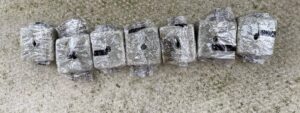
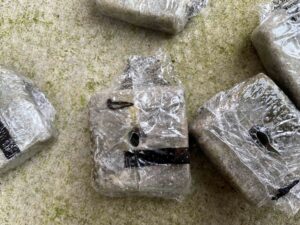
This then leads to the second stage of visible change. This increase in surface sugars provide a substrate for some moulds, gradually turning the patina from white to grey/black (images 3 & 4).

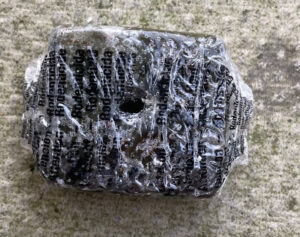
It is important to note that for quite some time this discolouration is only surface deep and will take months or significantly challenging conditions to penetrate into the block. When the block starts to look like it does after week 8 (images 3 & 4), this is when we find most users believe the product looks unattractive, remove the bait as waste, and this is where most people are wasting money.
Yes, it doesn’t look nice in our eyes, but rats and mice have a totally different view. During our ageing process, even at week 16 we had bait take (image 5) despite the visual appearance of the blocks.
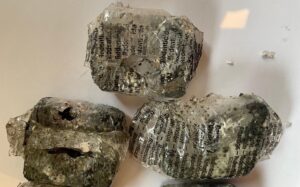
Phase 1
After this period of naturally induced ageing had elapsed, the blocks were removed from their placements and taken back to the QC labs. These were then tested to see how much, if any, impact the blooming and surface mould has on the overall cholecalciferol content of the block.
In these tests, blocks that had been exposed to the natural ageing process for over four months showed little to no degradation in cholecalciferol content.
Phases 2 & 3
The proof they say, is in the eating of the pudding. Regardless of whether this patina is only surface deep, if it stops rodents from engaging with the bait then the bait is no longer functional. With that in mind, these aged samples were then used to control a known population of rodents.
The trials with aged bait were still empirically proved to be utmost palatable with the outstanding level of acceptance that you would expect for Selontra under normal circumstances, and 100% effective at controlling rodents within the short timeframe we expect.
Final thoughts
Now, you have to remember, the length of time you leave your bait in deployment doesn’t exclusively revolve around whether or not it will work (even though we can see that it will).
With Selontra, obviously, we find that in most situations there is strong bait take in the first couple days and the infestations are controlled in a short time.
Therefore, these ageing considerations are more relevant to permanent and long-term baiting scenarios.
Remember that some other products on the market cannot be used in a permanent or long-term baiting strategy, additionally the risk assessments you undertake on some sites will preclude the long-term use of any chemical control.
With that, the take home should be as such, the way in which rodents analyse and assess the suitability of baits is radically different from our own visual measurements. Looks can be deceiving, and rather than replace perfectly useable bait understand that often these blemishes only run surface deep (see image 6).
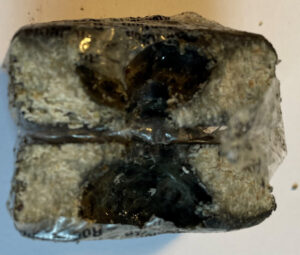
So, to summarise, Selontra is one of the perfect options to use on a site that you deem appropriate to permanently bait, because of how long it will remain palatable and effective, when many other products may not. So don’t be too quick to replace Selontra and ensure you are maximising the time the product continues to remain effective. Beauty as they say, is only skin deep… It is what’s inside (a rat’s stomach) that counts!


